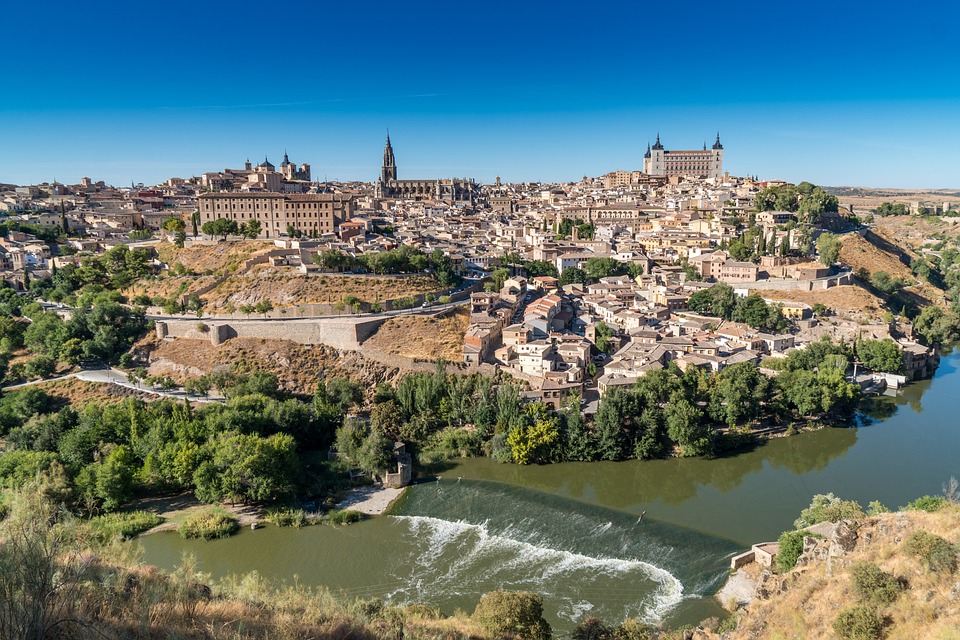Introduction
Toledo, a city located in central Spain, holds a rich and fascinating history, notably its Jewish heritage. The Jewish Quarter, also known as Judería, is an area of historic significance, offering a glimpse into the vibrant Jewish culture that once thrived within its walls. This article aims to delve into the captivating history of Toledo’s Jewish Quarter, exploring the influence and contributions of the Jewish community throughout the centuries.
Origins and Flourishing
The Jewish presence in Toledo dates back to the Roman period, around the 1st century AD. Jews settled and thrived in the city for centuries, contributing to its cultural, economic, and intellectual development. Toledo became a renowned center for Jewish learning and scholarship during the Middle Ages, attracting Jewish scholars and philosophers.
The Convivencia Period
During the Islamic rule in Spain, from the 8th to the 11th centuries, the Jewish community flourished under the concept of “convivencia,” meaning peaceful coexistence. Jews were able to freely practice their religion, engage in trade, and contribute to Toledo’s intellectual and cultural advancements. This era fostered a unique cross-cultural exchange between Jews, Muslims, and Christians.
Christian Repercussions
Following the Christian conquest of Toledo in 1085, Jews faced increasing discrimination and persecution. Jewish quarters were established, segregating the Jewish community from the Christian population. Despite this, Jews played a crucial role in the cultural and economic life of the city, particularly in translating and preserving ancient texts.
The Synagogue of Santa María la Blanca
One of the most remarkable remnants of Toledo’s Jewish heritage is the Synagogue of Santa María la Blanca. Built in the 12th century, it is a stunning example of Mudéjar architecture. Though originally a Jewish place of worship, it was converted into a Catholic church in the 15th century. The synagogue’s grand interior and picturesque courtyard stand as a testament to Toledo’s Jewish past.
The Legacy Today
Today, Toledo’s Jewish Quarter has become a cultural and historical hub attracting locals and tourists alike. The narrow winding streets, the remains of synagogues, and the Sephardic Museum all contribute to preserving and celebrating the Jewish heritage of the city. Annual events such as the Jewish Culture Festival further highlight the diverse and enduring impact of the Jewish community.
FAQs
Q: How can I visit Toledo’s Jewish Quarter?
A: Toledo’s Jewish Quarter is easily accessible by foot from the city center. Visitors can explore the area independently or join guided tours available in multiple languages.
Q: What can I see in Toledo’s Jewish Quarter?
A: In Toledo’s Jewish Quarter, you can explore the Synagogue of Santa María la Blanca, the Transito Synagogue, and the Sephardic Museum. Additionally, wandering through the narrow streets allows you to soak up the atmosphere and admire the medieval architecture.
Q: What is the significance of the Sephardic Museum?
A: The Sephardic Museum, located in Toledo’s Jewish Quarter, showcases the history and culture of Sephardic Jews in Spain. It houses a remarkable collection of artifacts, from religious objects to archaeological findings, providing a comprehensive understanding of the Sephardic heritage.
Q: Are there any Jewish festivals or events in Toledo?
A: Yes, Toledo hosts an annual Jewish Culture Festival, celebrating the city’s Jewish past. The festival features music performances, exhibitions, workshops, and culinary experiences, allowing visitors to immerse themselves in the vibrant Jewish culture.

